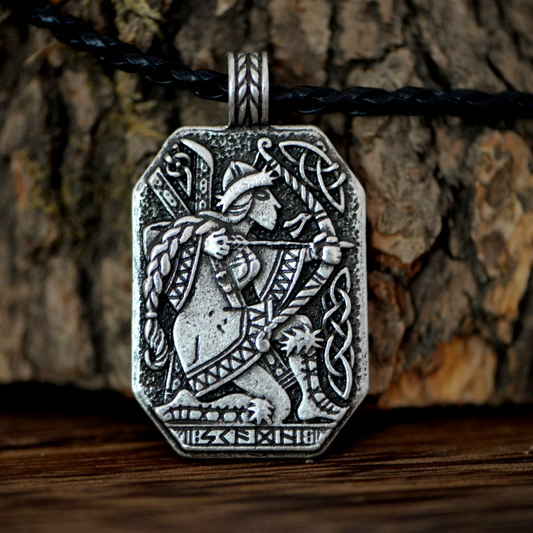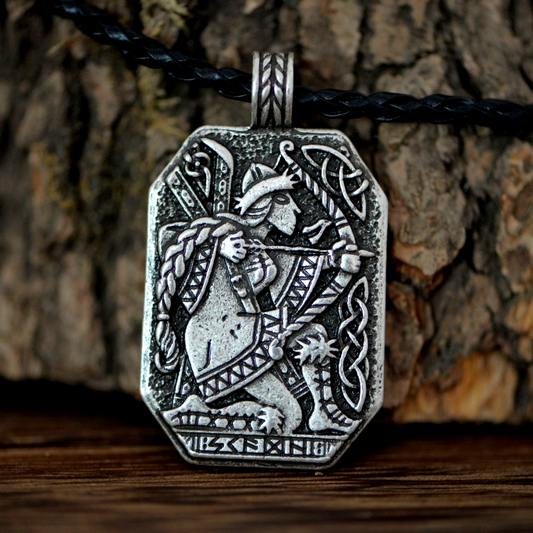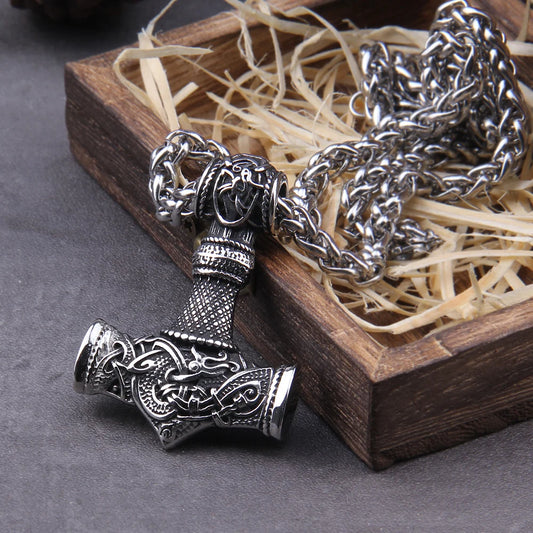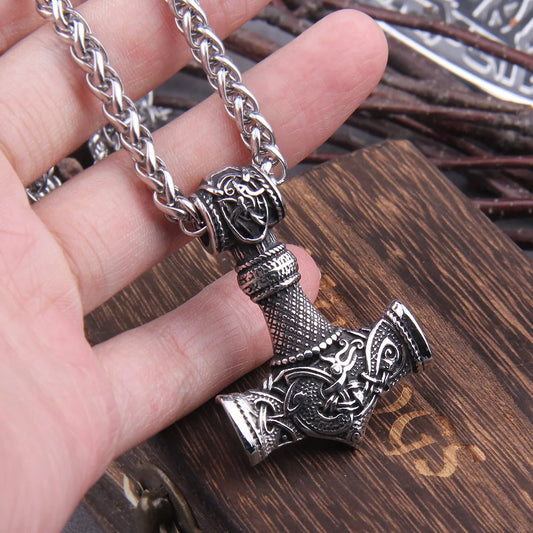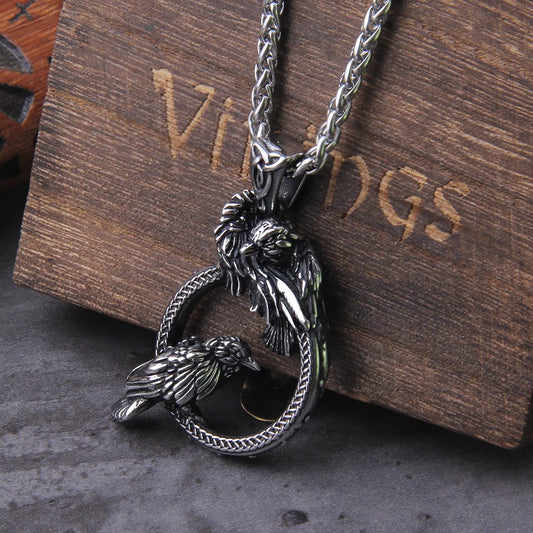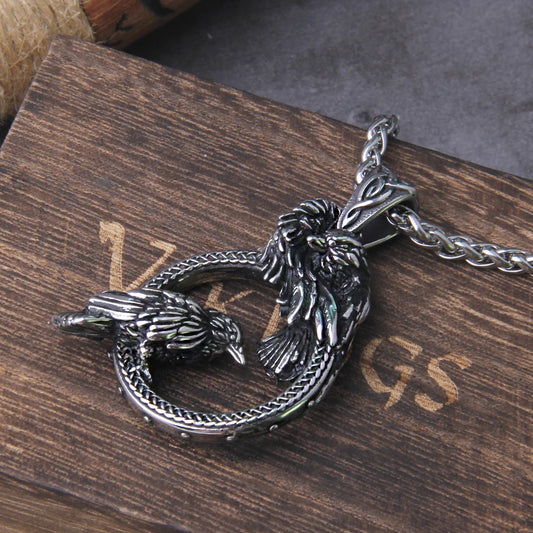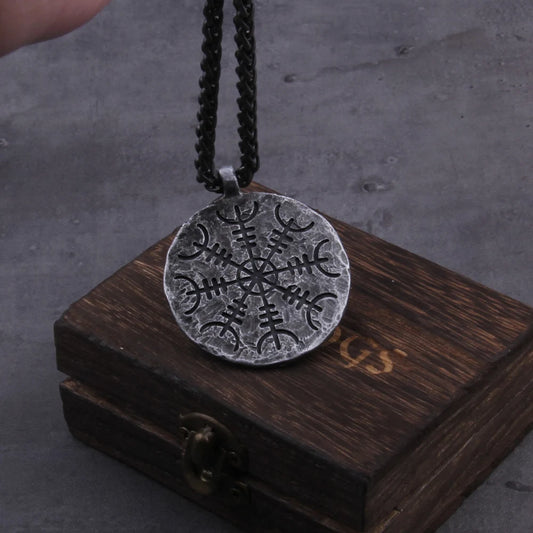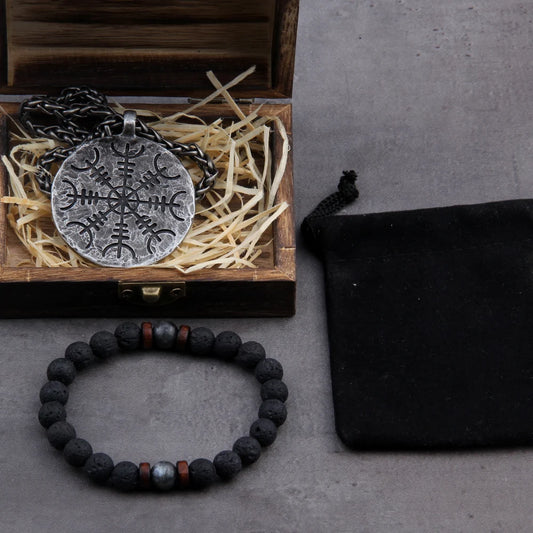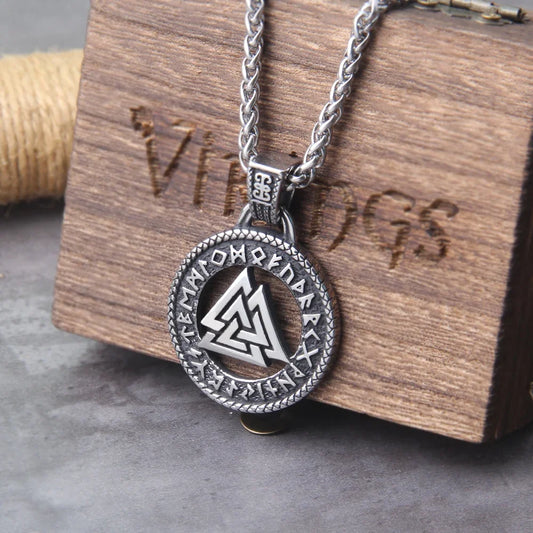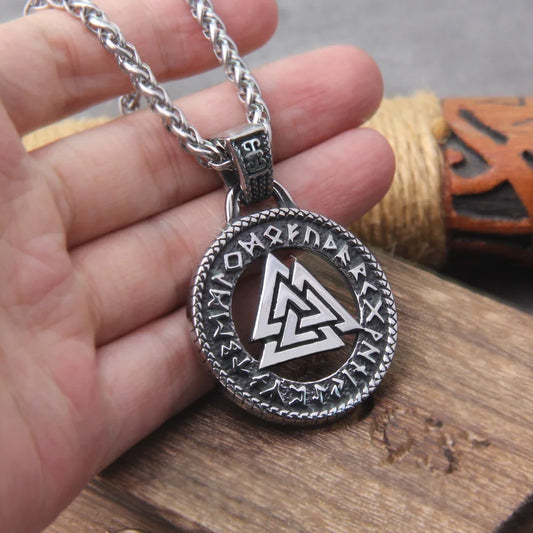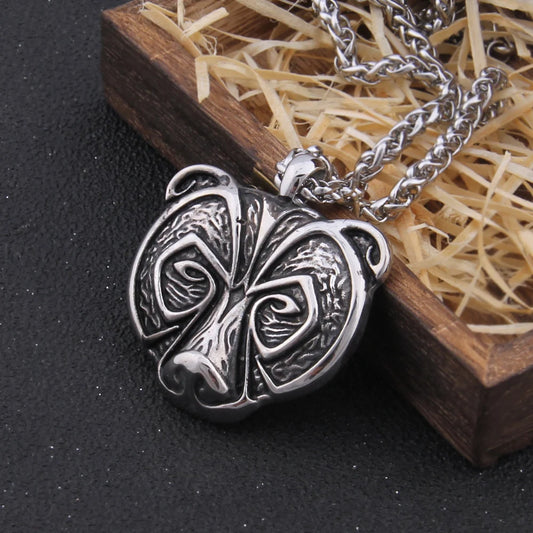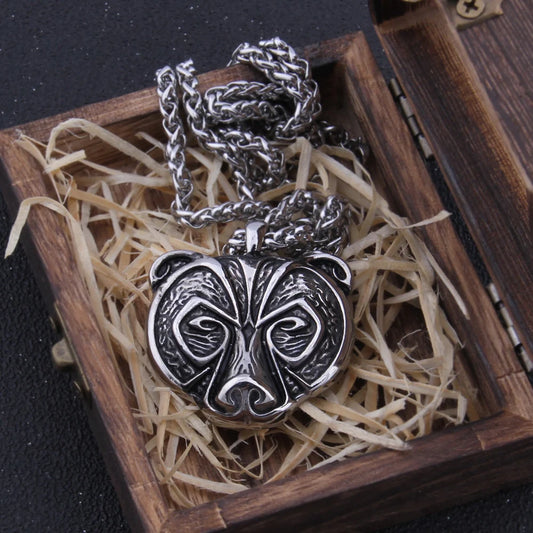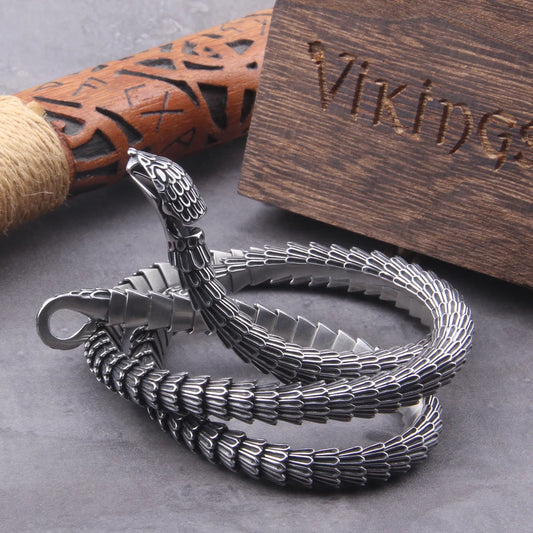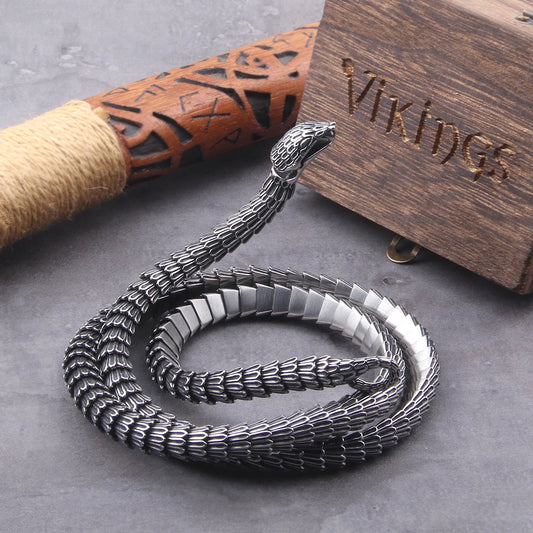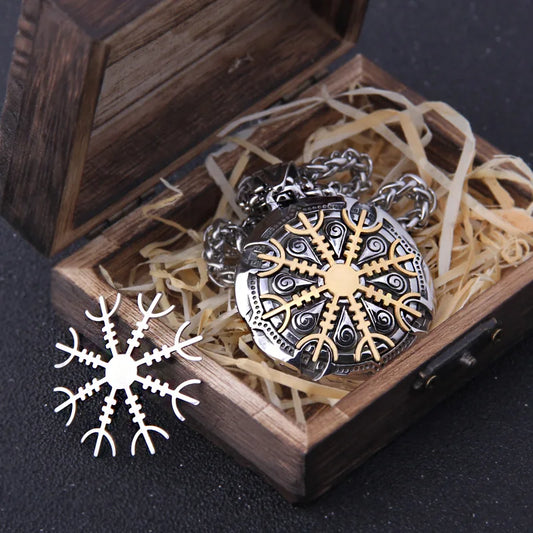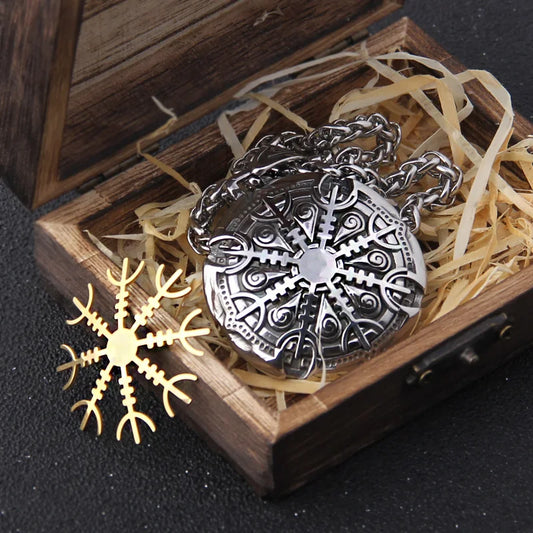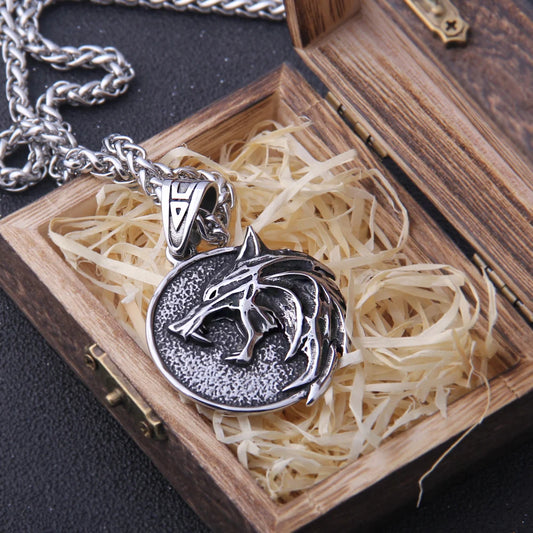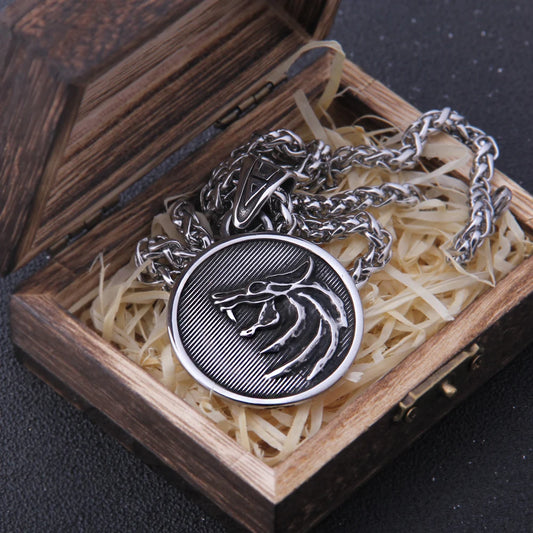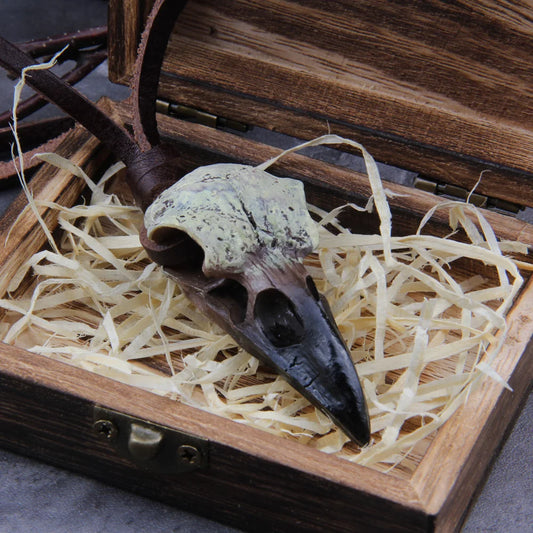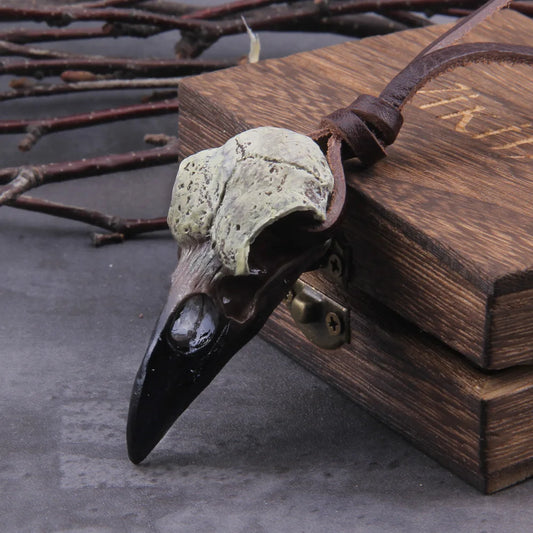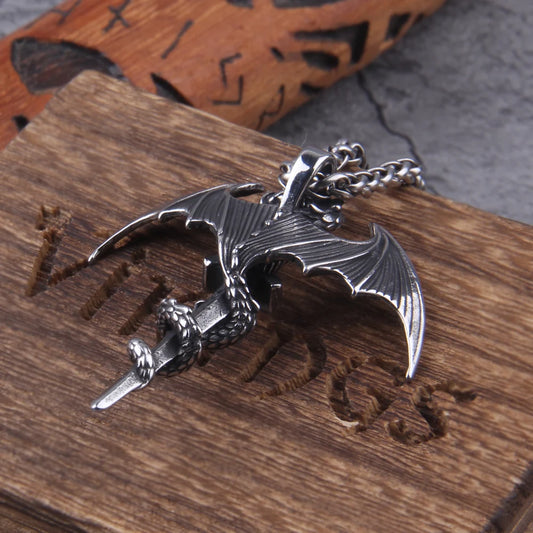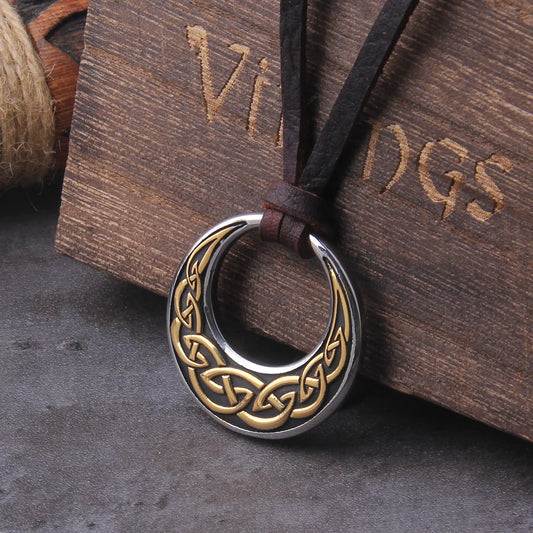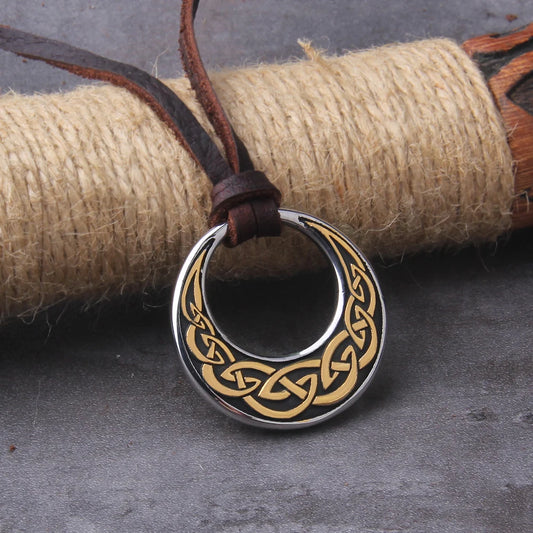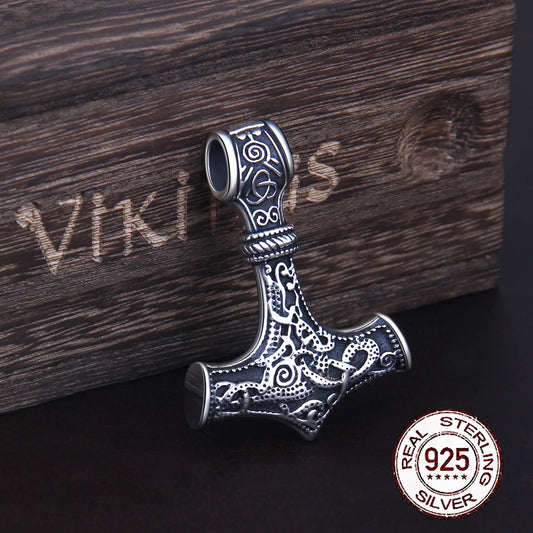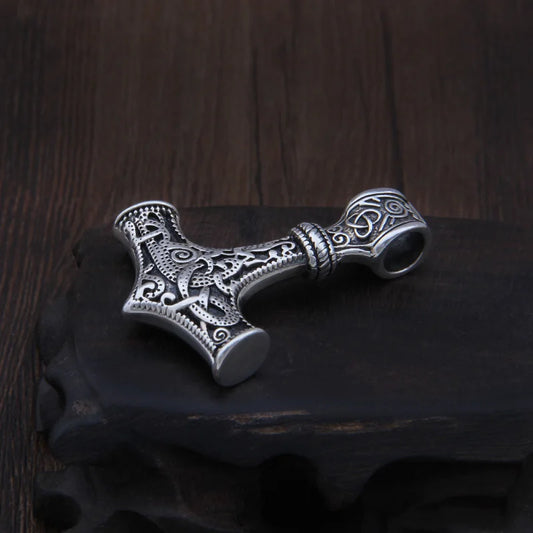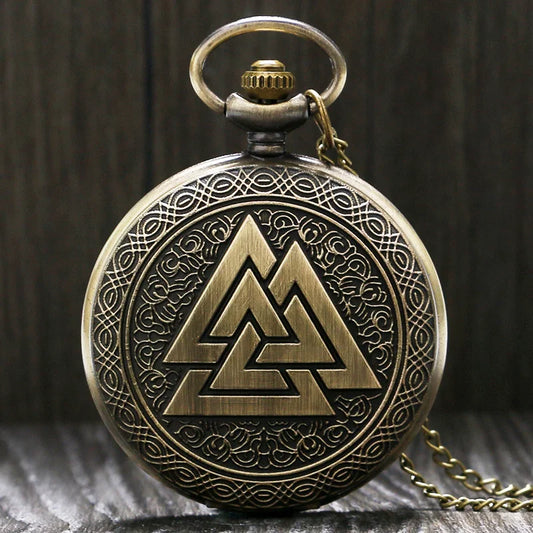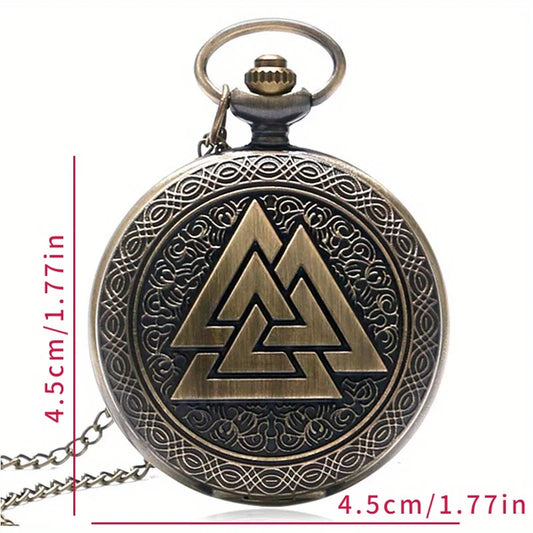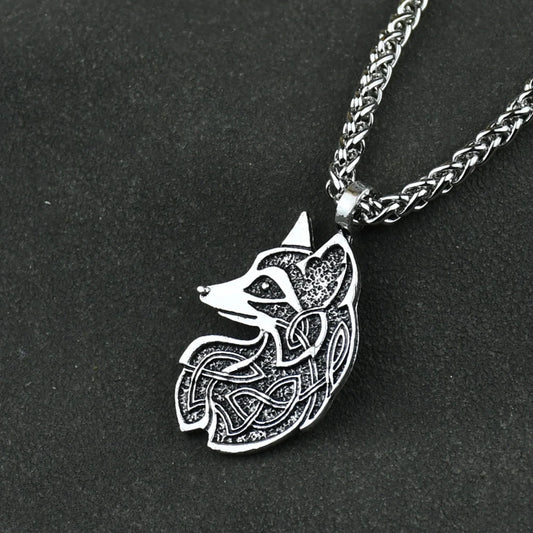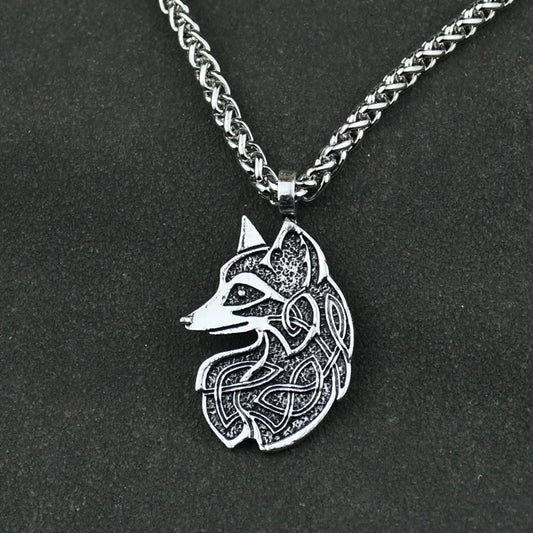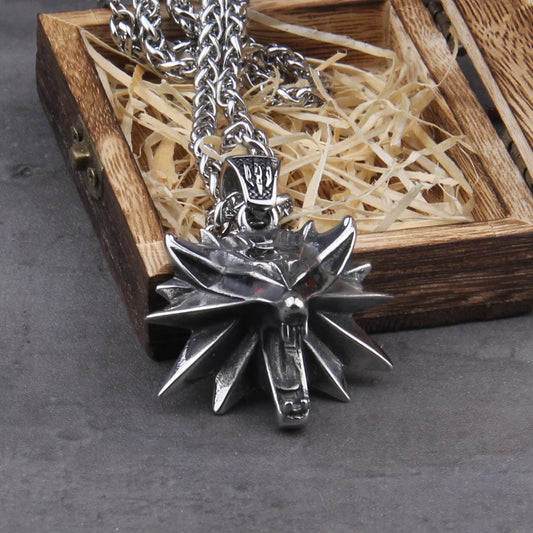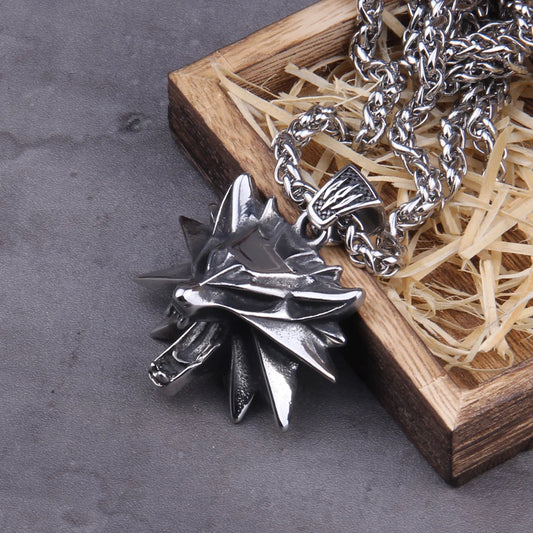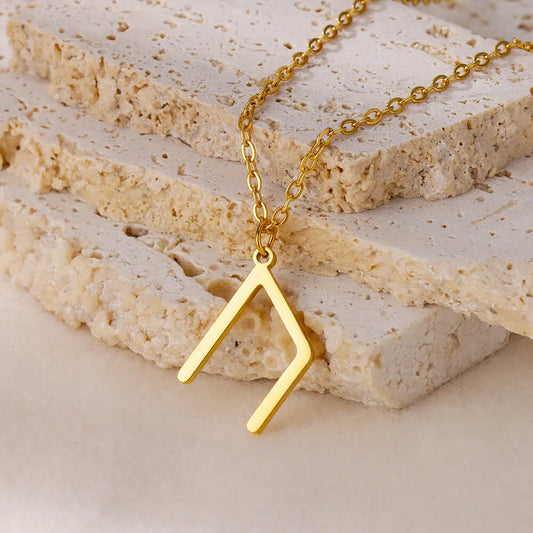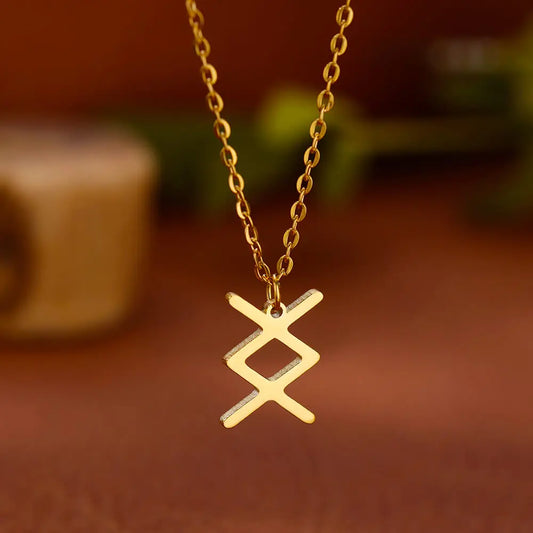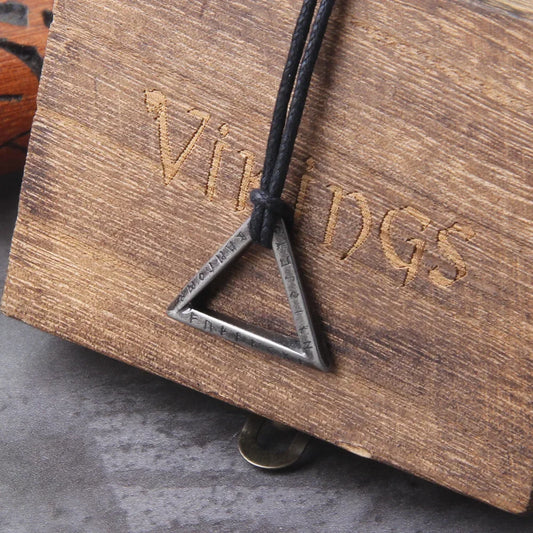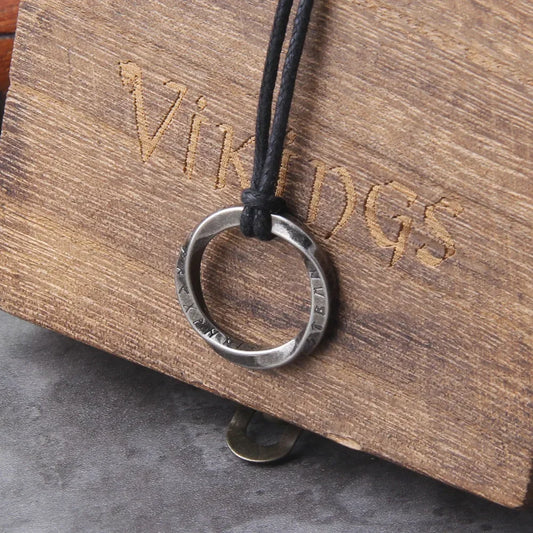-
Viking Necklace - Hunting goddess Skadi
Regular price $29.99 USDRegular priceUnit price per -
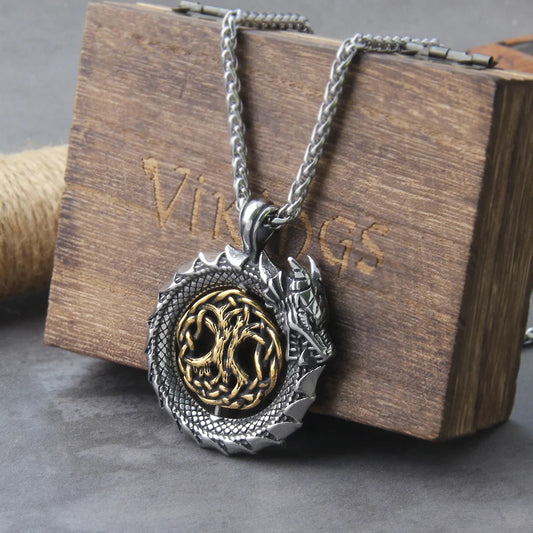
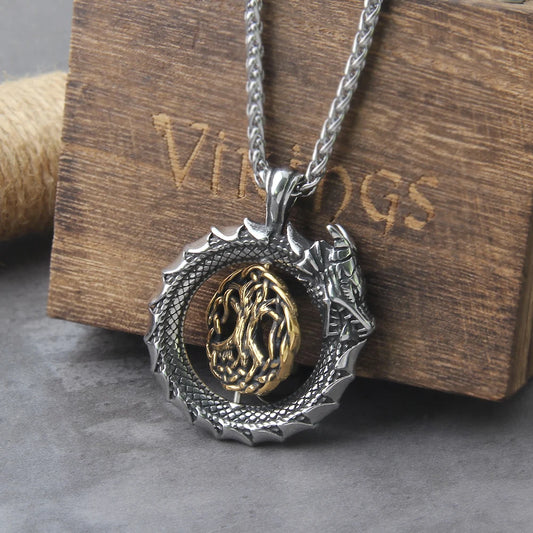
Never Fade Gold plated rotating life tree in Amulet ouroboros Pendant Necklace with vikings wood box
Regular price From $11.55 USDRegular priceUnit price per$0.00 USDSale price From $11.55 USD -
Stainless Steel Thor's Hammer Necklace Viking Dragon Necklace For Men Jewelry Talisman with wooden box as gift
Regular price From $15.96 USDRegular priceUnit price per$0.00 USDSale price From $15.96 USD -
Nordic mythology Odin Huginn and Muninn pendant necklace viking Raven necklace stainless steel never fade with wooden box
Regular price From $11.55 USDRegular priceUnit price per$0.00 USDSale price From $11.55 USD -
"Helm of Awe" and "Viking Vegvisir" Iron Color Viking Rune Pendant Necklace with Stainless Steel Chain As Men Gift
Regular price From $11.40 USDRegular priceUnit price per$0.00 USDSale price From $11.40 USD -
Never Fade The Valknut Viking Runes Necklace Pendant Scandinavian Norse Vikings Charms with wooden box as men gift
Regular price From $12.00 USDRegular priceUnit price per$0.00 USDSale price From $12.00 USD -
Stainless Steel Never Fade Viking Bear necklace as men gift with wooden box
Regular price $16.80 USDRegular priceUnit price per$0.00 USDSale price $16.80 USD -
Viking snake vintage punk Necklace for men never fade stainless steel fashion Jewelry hippop street culture
Regular price From $53.46 USDRegular priceUnit price per$0.00 USDSale price From $53.46 USD -
Stainless Steel Vegvisir Viking Mix Gold Color Rune Necklace Viking Scandinavian Norse Viking Necklace Men Christmas Gift
Regular price $18.48 USDRegular priceUnit price per$0.00 USDSale price $18.48 USD -
the Wizard wolf head pendant necklace for Geralt with a The Wild Hunt 3 Figure TV
Regular price From $12.00 USDRegular priceUnit price per$0.00 USDSale price From $12.00 USD -
3D Goth Raven Skull Necklace Resin Replica Raven Magpie Crow Poe Gothic Gift,Halloween Raven Skull Necklace with wooden box
Regular price From $16.80 USDRegular priceUnit price per$0.00 USDSale price From $16.80 USD -
Retro Viking Pterodactyl Holy Sword Shape Pendant Necklace Men's Necklace Metal Sliding Dragon Necklace Accessorie Party Jewelry
Regular price From $12.00 USDRegular priceUnit price per$0.00 USDSale price From $12.00 USD -
Never Fade Celtic Knot Round Pendant Necklace have adjustable leather cord chain with vikings wooden box as gift
Regular price From $16.80 USDRegular priceUnit price per$0.00 USDSale price From $16.80 USD -
Real 925 Sterling Silver Thor Hammer Mjolnir choker Viking Amulet Scandinavian pendant necklace Norse Men Jewelry
Regular price $145.80 USDRegular priceUnit price per$0.00 USDSale price $145.80 USD -
Valknut Norse Vikings Bronze Quartz Pocket Watch Necklace Chain Three Interlocking Fob
Regular price $60.20 USDRegular priceUnit price per$0.00 USDSale price $60.20 USD -
Viking Runes Ship Amulet Talisman Pendant Necklace For Women Men Jewelry
Regular price $29.45 USDRegular priceUnit price per$0.00 USDSale price $29.45 USD -
Viking Fox Wolf Fenrir Pendant Necklace
Regular price From $7.47 USDRegular priceUnit price per$0.00 USDSale price From $7.47 USD -
Stainless Steel Viking jewelry Wizard 3 Wild Hunt Game pendant necklace Geralt wolf head necklace with wooden box
Regular price From $16.92 USDRegular priceUnit price per$0.00 USDSale price From $16.92 USD -
Viking Rune Necklace for Women Norse Runic Letter Pendant Necklaces Minimalist Nordic Stainless Steel Jewelry Christmas Gift
Regular price From $4.50 USDRegular priceUnit price per$0.00 USDSale price From $4.50 USD -
New Viking rune Letter Stainless Steel Pendant Necklace Vintage Style Concentric Ring Men Titanium Steel Necklace Jewelry
Regular price From $11.55 USDRegular priceUnit price per$0.00 USDSale price From $11.55 USD
Collection: Viking Necklaces
VIKING NECKLACES COLLECTION
Here you will find our full range of Viking Necklaces and Pendants. Viking necklaces, usually referred to as amulets, are not merely for aesthetic appearance.
They represent a self-affirmation and a belief that is valued.
Norse necklaces were worn for centuries by the Scandinavian populations, but not exclusively. A few of our Nordic necklaces feature a Celtic connotation.
Either way, a Viking necklace is an item that holds power and protection to its bearer. Be it in an ancient or contemporary style, each necklace has been shaped by time and history.
History of Viking Necklaces
Viking necklaces were crafted from a range of materials, including metals like silver, gold, and bronze. Natural fibers and wire of various lengths and diameters were also utilized.
Pendants consisting of glass beads, jewels, resin, Baltic amber (from the Baltic Sea), and small metal charms are typically used with necklaces. Glass, on the other hand, was the most frequent material for necklace pendants, and it was mass-produced for this reason. Pendants on necklaces were frequently souvenirs, presents, or religious symbols from the Nordic countries that had meaning for the wearer.
Vikings wore neck rings on occasion in addition to necklaces. The neck rings discovered around Europe were made of silver, bronze, or gold, and the majority were discovered in coal mines rather than tombs, indicating that they were composed of silver, bronze, or gold.
The Mjolnir, or Thor's hammer, the Valknut, and the Yggdrasil, or tree of life, were the most common Viking necklace pendants.
The Thor's hammer pendant appears to be the most commonly worn of all of them. Miniature weapons like axes and arrowheads, perforated coins, and crosses are other examples, although they've only been discovered in a few tombs, implying that they weren't worn very often.
You might argue why a pagan people would wear crosses, but Christian missionaries were still converting Vikings in small numbers during the Viking era, and as a result, some Norsemen joined this new faith, resulting in a hybrid belief system.

